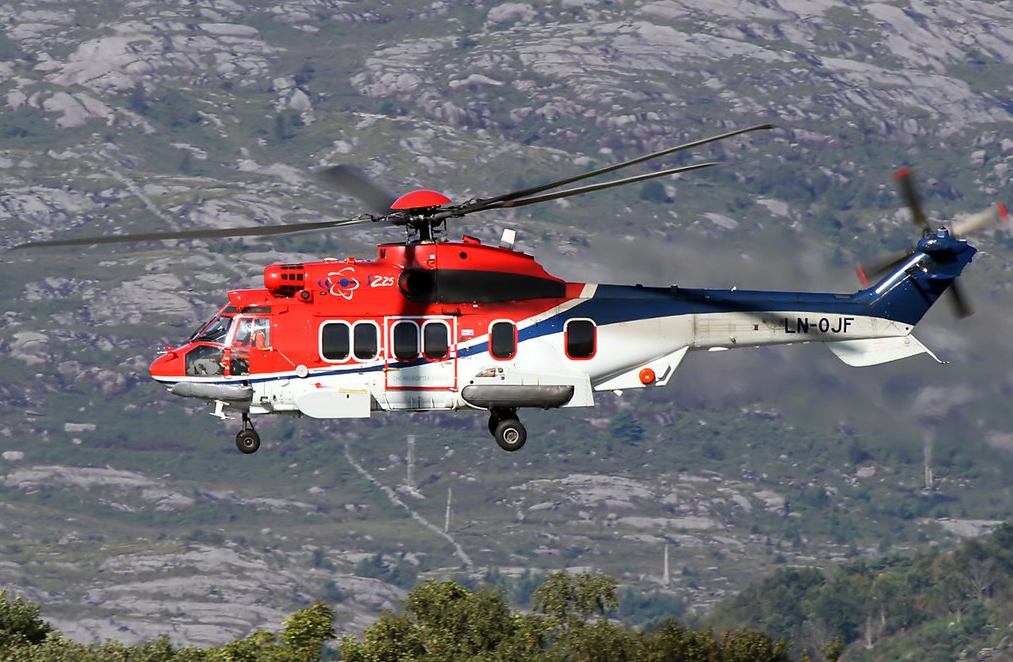
Investigators for a North Sea helicopter crash, which killed 13 people last month, are set to resume their search for missing parts next month.
The announcement comes after they said they have identified three possible causes.
It comes after an initial preliminary report was published earlier this month which showed the flight dropped 2,000ft from the sky when its main rotor head and mast suddenly detached.
Now after a three-day meeting at Airbus Helicopters operations in the South of France several possible outcomes have been identified.
These include the struts that attach the rotor head to the helicopter and two parts linked to the gearbox that drive the blades, the epicyclic module and the main gearbox housing.
There were 11 passengers and two crew on board the CHC Super Puma EC225 flight when it made its way from Statoil’s Gullfaks B platform to Flesland Airport when it crashed on April 29th.
An official investigation team led by the AIBN met at Airbus Helicopter premises in Marignane near Marseille, France last week alongside members of CHC, the Civil Aviation Authority UK (CAA), the Air Accident Investigations Branch UK (AAIB) and the European Aviation Safety Authority (EASA).
However, Airbus Helicopters has been quick to dismiss the latest preliminary findings, issuing a statement which said its own analysis had narrowed the probable cause to the attachment of the suspension bars rather than the gearbox.
It said its own analysis had produced seven potential theories to explain why the main rotor had detached.
A spokesman said: “According to Airbus Helicopters’ analysis, seven potential initial events have been retained to explain the main rotor detachment of LN-OJF.
“Out of these seven scenarios, only one – the failure of the attachment of a suspension bar – can be assessed as probable by Airbus Helicopters, based on the information available to date.
“At this stage, the exact cause of this possible event is still unknown. Analysis of the helicopter’s maintenance history has just started and should provide a better understanding of the most
likely causes.”
Both the UK and Norway have grounded commercial Super Puma flights in the wake of the crash.
Oil major Shell has continued to find alternative flights with Bristow Helicopters while it works with CHC to assess its operations.
Earlier this month the AIBN said there had been a “sudden catastrophic failure” which developed in only one to two seconds before the flight impacted on a small island and caught fire.
A spokesman for the AIBN has said it is still too early to say what caused the crash.
The AIBN has also revealed a number of vital parts from the helicopter are still to be found.
In its latest report, it said a refined flight path and mapping of where the previous components had been found would be carried out in order to fine-tune a new search for the key components.
Meanwhile detailed examinations of parts already found in the clear-up of the wreckage are been assessed in Norway, England and in France.
